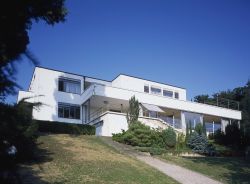
The restoration of the Tugendhat villa will be delayed again due to the objections of preservationists
 |
The second possibility is that Brno, as the owner of the heritage site, and the Association for the Tugendhat Villa as the developer of the documentation will appeal. The issue would then be addressed again by the Ministry of Culture.
The project for the restoration of the heritage site faces a clash of opinions between builders and heritage conservators. The builders want to ensure that the building's structure will be sound after the renovation, while the conservators resist interventions unless it is proven that they are absolutely necessary. The author of the static support plans proposed to replace the bases of the pillars on which the building stands with new ones and to support the structure with micropiles. However, the heritage conservators are not convinced that such a solution is necessary.
According to Drobný, experts on heritage protection have previously pointed out several times that the proposed solution for static support needs to be backed by measurement results from additional probes. They demanded that it be conclusively demonstrated that the structural issues lie in the underground construction, as claimed by the structural engineer. However, the probes, according to them, did not prove this.
Heritage conservators are guarding the underground structure of the villa because it is precisely its structural solution that makes the Tugendhat villa exceptionally valuable. The building consists of a steel skeleton, and the floors are supported not by walls but only by slender chrome pillars. Such a construction allowed architect Ludwig Mies van der Rohe (1886 to 1969) to clad the house with large glass panels, some of which could even be recessed into the ground. Mies, considered the father of modern architecture in the 20th century, thus breathed life into his idea of inhabitable continuous space; the surroundings literally entered the house through the glass walls.
The villa has been on the UNESCO cultural heritage list since 2001. Its heritage restoration was supposed to begin a year later. However, its start has been repeatedly postponed due to disputes among the teams that participated in the tender for the project. The descendants of the original owners recently requested the return of the heritage site from Brno due to the delays, but the representatives refused. According to Drobný, the current complications will likely cause several months of delay. It may take that long to develop a new static support project.
The English translation is powered by AI tool. Switch to Czech to view the original text source.
0 comments
add comment












